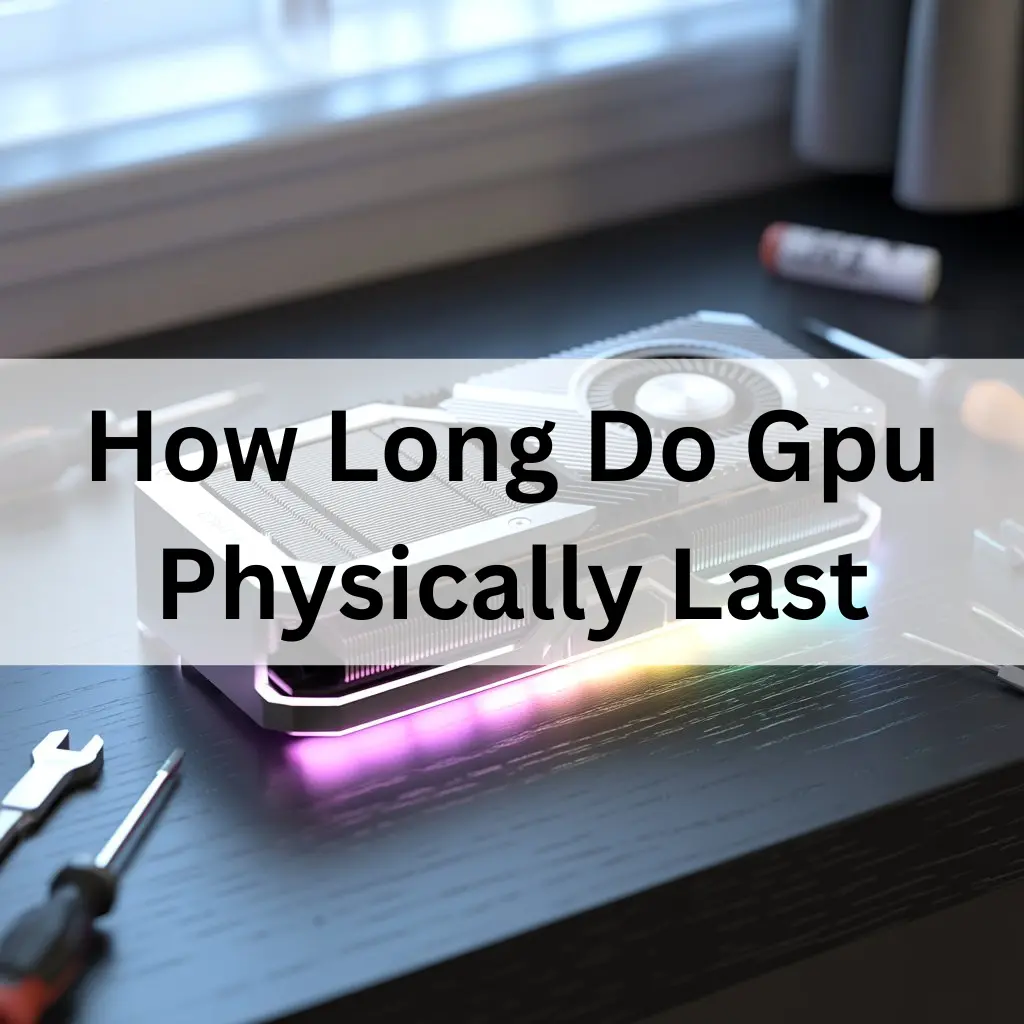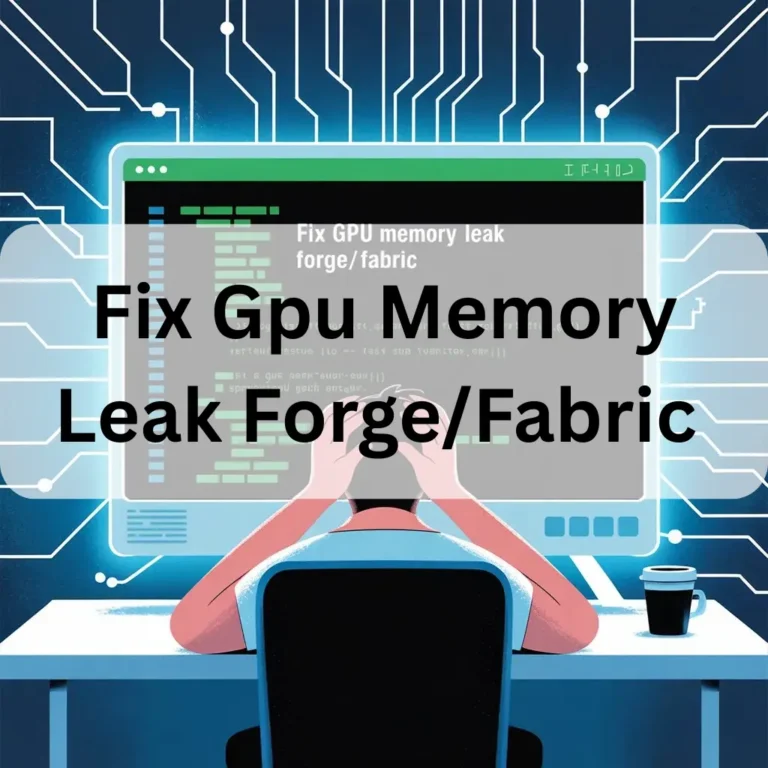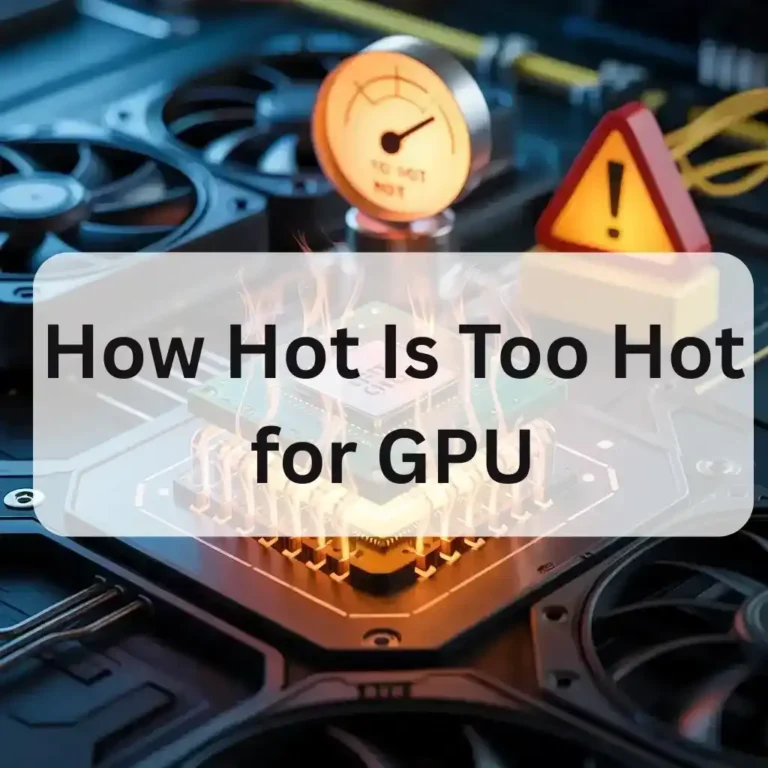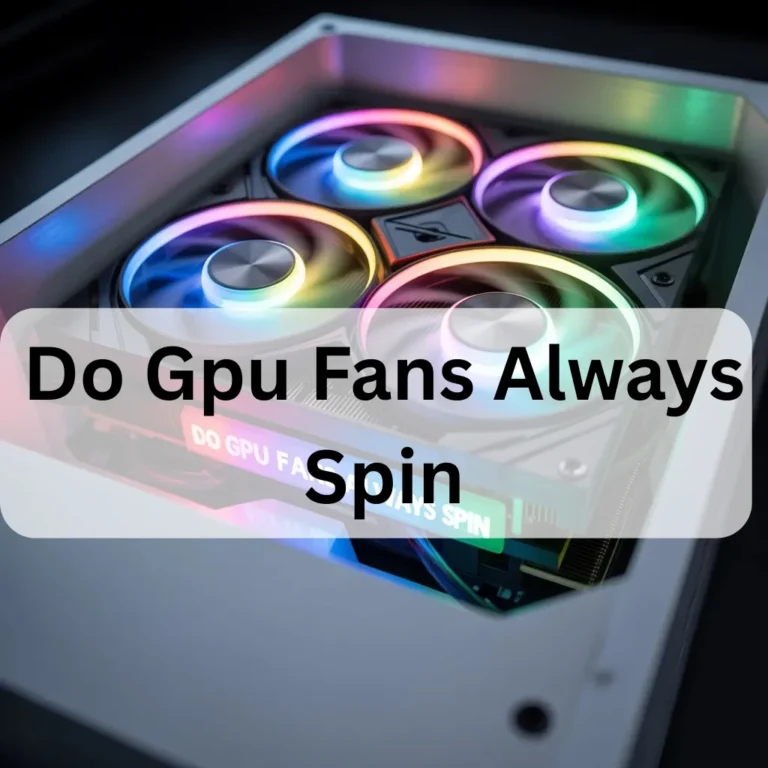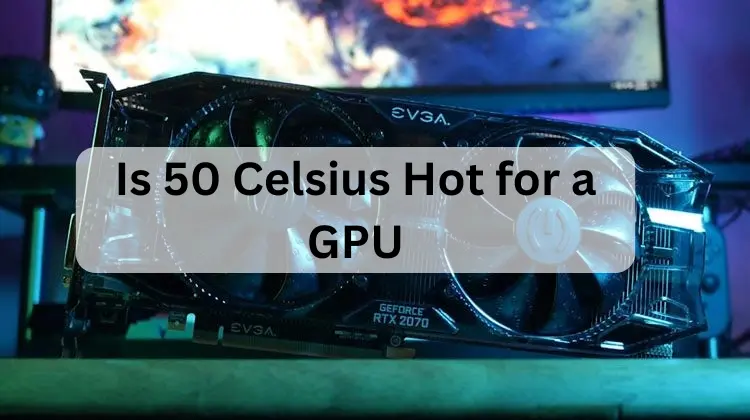How Long Do Gpu Physically Last – Learn GPU lifespan 2025!
A GPU typically lasts between 5 and 8 years with regular use. Heavy gaming, mining, dust, and heat can shorten lifespan. Keeping the GPU cool, clean, well-ventilated, updated, and powered with a stable supply helps it last longer safely.
They handle gaming, design, video editing, and many other heavy tasks. But many users often ask, How long do GPUs physically last before they stop working. The answer depends on how you use and care for it. On average, a GPU can last for many years, but heat, dust, and heavy loads can significantly reduce its lifespan. With good cooling, regular cleaning, and a stable power supply, your GPU can serve well for 5 to 8 years or even longer without major issues.
Understanding GPU Lifespan in Simple Terms:

A GPU does not last forever, but most good graphics cards can work well for 5 to 8 years if used with care. The lifespan depends on how you use it, the amount of heat it faces, and the cleanliness of your PC. If you game daily on high settings, the GPU may wear faster, but if you use it for normal tasks, it can last longer. Keeping your GPU cool, cleaning dust, and updating drivers helps it stay strong. Remember, a GPU does not suddenly die; it slowly shows signs, such as screen crashes, high fan noise, or low performance. By taking care, you can make your GPU last many years without problems.
Physical life vs performance life:
Physical Life
- Physical life refers to the duration for which the GPU hardware remains functional.
- With proper care, most GPUs can last 5 to 8 years or even longer.
- Heat, dust, and a weak power supply can make it die faster.
- If the card is clean and cool, its physical life becomes longer.
Performance Life
- Performance life means how long the GPU can keep up with new games and apps.
- After 3 to 5 years, the card may feel slow for modern software.
- The GPU still works fine, but struggles with heavy tasks.
- Upgrading on time gives better speed and smooth performance.
Average lifespan for normal users:
For normal users, a GPU typically lasts around 5 to 6 years without major issues.
If you use it for simple tasks like browsing, watching videos, or office work, the card does not face too much stress. Gaming on medium settings is also safe for many years, provided the card is well-cooled. Most normal users replace a GPU not because it is dead, but because new software and games need more power. With good cleaning and care, a GPU can even last 7 years of use.
Why lifespan matters for gamers:

For gamers, GPU lifespan is very important because it decides how long they can enjoy smooth gameplay. A strong GPU may last 5 to 6 years, but new games keep asking for higher power. If the card gets weak early, gamers face lag, low graphics, and crashes. Replacing a GPU is also costly, so gamers want maximum years from their card. By keeping the GPU cool, clean, and updated, they can enjoy stable performance for many years. This makes lifespan a key factor for every gamer who wants value and a better experience.
Average Lifespan of Modern GPUs:
For gamers, GPU lifespan is very important because it decides how long they can enjoy smooth gameplay. A strong GPU may last 5 to 6 years, but new games keep asking for higher power. If the card gets weak early, gamers face lag, low graphics, and crashes. Replacing a GPU is also costly, so gamers want maximum years from their card. By keeping the GPU cool, clean, and updated, they can enjoy stable performance for many years. This makes lifespan a key factor for every gamer who wants value and a better experience.
Daily use and office work:
For daily use and office work, a GPU can last much longer because it is not pushed to its limits. Tasks like browsing, video watching, using Excel, or meetings do not stress the card. Many GPUs run smoothly for 7 to 8 years in normal use if they stay cool and dust-free. Unlike gaming or heavy software, office use keeps the GPU safe from extra heat and load. Normal users usually replace their GPU only when they upgrade the whole system, not because the card is dead. This makes GPUs very reliable for office and home tasks.
Gaming and high-performance use:
For gaming and high-performance use, a GPU works harder and its lifespan becomes shorter than in normal use. Heavy games, video editing, and 3D software put an extra load that creates more heat. On average, such GPUs last 3 to 5 years before showing performance drops. Gamers often upgrade earlier because new games demand more power every year. If the GPU is kept cool, clean, and paired with a good power supply, it can last longer. Still, high-performance use always reduces lifespan compared to office or Easy work. Proper care is the only way to get maximum years from it.
Mining and AI workloads:
Mining and AI workloads push a GPU harder than gaming. Mining makes the card run all day without rest, which builds heat and stress. AI tasks like machine learning and data training also keep the GPU at full usage. This nonstop load shortens the life of fans, VRAM, and power parts. Many cards used for mining or AI fail in 2 to 3 years. A strong cooling system and clean power can help, but the risk of early damage is always high. This is why GPUs used in mining and AI applications do not last as long as those used in normal gaming.
Comparing GPU Lifespan Across Nvidia, AMD, and Intel:

- Nvidia GPUs usually last longer because they use strong build quality and better cooling systems. Many users say they can use Nvidia cards for 5 to 8 years with care.
- AMD GPUs also give a good lifespan. They may run a bit hotter, but with proper cooling and drivers, they can also work well for 4 to 7 years.
- Intel GPUs are new in the market. Their life is still being tested, but for normal office Power supply quality
- work and light gaming, they can easily last for 3 to 5 years.
Market trust and durability:
When people buy a GPU, they do not only see speed. They also check if the brand can be trusted and if the card has a long life. A GPU with a strong build gives better value. Nvidia and AMD have been trusted for many years. Intel is still new, but it is trying to build trust. A brand that gives long life wins more users.
Performance stability over the years:
Signs Your GPU Is Nearing the End.
A GPU may work fine for many years, but its performance does not always stay the same. Over time, new games and apps need more power. Even if the card still runs, it may feel slower. Dust and heat can also reduce smooth use. A well-kept GPU will stay stable longer, but no card can give the same speed forever.
Real-world user reports:
Many users share that their GPUs work well for 4 to 6 years with care. Some gamers report stable use for more than this, while heavy users like miners see shorter lives. These reports show that use style matters more than brand. Good airflow, regular cleaning, and lighter loads help GPUs stay strong for longer in real-world use.
Major Factors That Affect GPU Life Expectancy:

A GPU does not last the same for every user. Its life depends on many key factors. Heat, dust, heavy use, poor power supply, and overclocking can make it weaker faster. On the other hand, good cooling, stable power, and clean airflow help it stay strong for years. Even though how often you play games or run heavy apps changes its lifespan. By knowing these factors, users can take the right steps and get the best value from their GPU.
Heat and cooling system:
Heat is the main problem for a GPU. When it gets too hot, its parts can get weak faster. A good cooling setup keeps the GPU safe and running well for years. Clean fans, open airflow, and a dust-free case make a big difference. Gamers and heavy users should check GPU temperature often. With proper cooling, a GPU can stay strong and give stable use for a long time.
Power supply quality:
A GPU needs clean and stable power to work for years. If the power supply is weak or cheap, it can harm the card and shorten its life. A good PSU gives steady voltage and protects the GPU from sudden drops or spikes. Using the right wattage and a trusted brand keeps the GPU safe. Many users lose GPU life only because of a poor power supply, so it is one of the most important parts to check.
Usage time per day:
How long you use your GPU each day changes your life. If you keep it on for many hours for gaming or heavy work, it will wear out faster. If you use it for a short time, like watching videos or light work, it will last longer. It is better to give the GPU some rest. Do not keep it running all day and night. Turn off your PC when you do not need it.
Signs Your GPU Is Nearing the End:

A GPU does not die overnight. It gives clear signs before it stops working. If you see these signs, your GPU may be nearing the end of its lifespan.
1. Strange Lines or Colors on Screen:
If you see additional lines, dots, or colors while using your PC, it means the GPU is not working well.
2. PC Crashes or Freezes:
If your PC hangs or shuts down while gaming or watching videos, the GPU may be weak.
3. Too Much Heat:
If the GPU gets very hot even in normal use, it shows the GPU is failing.
4. Loud Fan Noise:
If the GPU fan runs fast and makes a loud noise all the time, it means the GPU is struggling.
5. Bad Game Performance:
If games run slowly or frame rates drop, it is a clear sign that the GPU is losing power.
Common visual problems:
When a GPU starts to fail, your screen may show many visual issues. These are early warning signs that your GPU is weak.
Screen Artifacts: You may see small shapes, lines, or dots on the screen that should not be there.
Color Distortion: Colors may look too bright, faded, or completely wrong.
Screen Flickering: The display may blink or flash again and again.
Black Screen:
Sometimes the display may turn black for a few seconds and then return.
Texture Errors in Games: In games, objects may look broken or have missing parts.
These problems show that your GPU is not handling graphics properly and may soon fail.
Sudden system crashes:
One clear sign of a dying GPU is sudden crashes. Your PC may turn off or restart without warning. This often happens when the GPU cannot handle heavy work like gaming or video editing.
During Gaming: The screen may freeze, and the PC may restart.
While Watching Videos, you may see the screen go black and the system crash.
Blue Screen Error: Sometimes the PC shows a blue screen error because the GPU fails.
If your PC crashes again and again, even after updating drivers, the GPU may be near its end.
Noise and overheating:
A weak GPU often makes more noise and gets too hot. This is a common sign that the GPU is near the end.
- Loud Fan Noise: If the GPU fan is always running fast and making loud noise, it shows the card is struggling to stay cool.
- High Temperature: If the GPU heats up quickly, even in light use, it means the cooling system or GPU is failing.
- Game Performance Drops: Overheating often leads to frame drops and lag in games.
- System Shuts Down: Sometimes the PC may turn off to protect itself from high GPU heat.
Best Ways to Make Your GPU Last Longer:
A GPU can last for many years if you take good care of it. By following some simple steps, you can keep your GPU healthy and avoid early failure.
1. Keep Your GPU Clean:
Dust can block airflow and make the GPU hot. Clean the fans and heatsink regularly with compressed air.
2. Maintain Good Airflow:
Make sure your PC case has enough fans for proper cooling. Good airflow keeps the GPU temperature low.
3. Avoid Overheating:
Monitor GPU temps and keep them under safe limits. Overheating reduces the life of the GPU.
4. Update Drivers Regularly:
Always install the latest GPU drivers. Updated drivers fix bugs and improve performance.
5. Do Not Overclock Too Much:
Overclocking may give more speed, but it also creates heat and stress. Keep it safe to avoid damage.
6. Use Quality Power Supply:
A stable and strong power supply keeps the GPU safe from sudden power issues.
By following these steps, your GPU will stay cool, stable, and last for a long time.
Keeping it cool and clean:
Heat and dust are the biggest enemies of a GPU. If you keep your GPU cool and clean, it will last much longer.
Remove Dust: Dust blocks airflow and makes the GPU hot. Use compressed air or a soft brush to clean it.
Good Airflow: Make sure your PC case has fans that move air in and out. This helps keep the GPU cool.
Change Thermal Paste: Old thermal paste can dry and stop working. Replacing it helps reduce heat.
Regular Check: Clean the GPU every few months to stop dust from building up.
By keeping your GPU clean and cool, you can avoid overheating and protect it from damage.
Avoiding extreme overclocking:
Overclocking makes a GPU run faster, but it also creates more heat and stress. If you push it too much, the GPU can lose its life quickly.
- Extra Heat: Extreme overclocking makes the GPU very hot, which can damage parts inside.
- Less Stability: Games and apps may crash if the GPU is not stable.
- Short Life: Running a GPU above safe limits reduces its overall lifespan.
- Safe Choice: Light overclocking is fine if temps stay low, but avoid pushing the GPU too far.
- By keeping overclocking under control, you can protect your GPU and make it last longer.
Using proper driver updates:
Keeping your GPU drivers up to date is very important. Drivers help your GPU work better with games and apps.
- Better Performance: New drivers fix bugs and improve speed in games.
- More Stability: Updates reduce crashes and keep your system stable.
- Security Fixes: Driver updates also protect your PC from problems and errors.
- Easy Updates: You can update drivers from NVIDIA, AMD, or Windows update tools.
- By updating drivers on time, your GPU will stay smooth, safe, and last longer.
When Is the Right Time to Replace Your GPU:
A GPU does not last forever. With time, it becomes weak and may not handle new software or games. Knowing the right time to replace it can save you from crashes and slow performance.
1. Too Many Visual Problems:
If you see strange lines, colors, or frequent screen errors, it means the GPU is failing.
2. Frequent System Crashes:
If your PC keeps freezing or restarting, even after updates, the GPU may need replacement.
3. Poor Game Performance:
If games run very slowly, drop frames, or do not start, it shows the GPU is too old.
4. High Heat and Noise:
If the GPU gets too hot and noisy even in light use, it is near the end.
5. Not Supporting New Software:
If new apps or games do not run because your GPU is outdated, it is time for an upgrade.
Replacing your GPU at the right time keeps your PC smooth and ready for modern tasks.
Outdated for new games:
Modern games need strong GPUs to run smoothly. If your GPU is old, it may not support the latest titles. Here are the main signs:
1. Games Do Not Start:
Some new games will not even launch if your GPU does not meet the minimum system requirements.
2. Very Low FPS:
If games run but give very low frames per second FPS, the GPU is too weak. This makes the game slow and unplayable.
3. Missing Graphic Features:
New games use advanced features like ray tracing and DirectX 12. If your GPU does not support them, graphics will look poor or may not load.
4. Lag and Stuttering:
Even in low settings, if games keep lagging or stuttering, it means the GPU cannot keep up.
5. Forced to Use Low Settings:
If you always have to set graphics to very low just to play, your GPU is outdated for modern games.
Frequent hardware issues:
An old GPU often starts showing hardware problems again and again. These issues affect both games and normal PC use.
- Loose Connections: The GPU may not connect properly, causing display errors.
- Driver Conflicts: Old GPUs may not work well with new drivers, leading to crashes.
- Heating Problems: Older cards heat up quickly and need more cooling.
- Fan Failure: The cooling fan may stop working, which increases GPU damage.
- Power Problems: A Weak or unstable power supply can cause frequent black screens with an old GPU.
- If these issues keep happening, it shows the GPU is too old and needs replacement.
Repair cost vs upgrade value:
When a GPU gets old, repair may not be worth the money. In many cases, upgrading is a smarter choice.
High Repair Cost: Fixing fans, chips, or circuits often costs almost as much as buying a new GPU.
Short Life After Repair: Even if repaired, an old GPU may fail again soon.
Better Performance in Upgrade: A new GPU gives more power, better graphics, and longer life.
Future-Proofing: Upgrading makes your PC ready for new games and software.
If repair costs are high, it is usually better to invest in a new GPU instead of fixing the old one.
Do Graphics Cards Get Slower Over Time:
A graphics card does not slow down by itself. The hardware speed stays the same. But with time, it can feel slower for many reasons.
1. New Software Needs More Power:
Modern games and apps are heavier. An old GPU cannot keep up with the new demands.
2. Driver and Support Limitations:
Old GPUs may stop getting driver updates. Without updates, performance and stability can drop.
3. Dust and Heat:
If the GPU gets dirty or too hot, it may throttle performance to stay safe.
4. Aging Hardware Parts:
Fans, thermal paste, and other parts wear out. This makes cooling weaker and lowers performance.
5. Compared to New GPUs:
When new GPUs are released with much higher speeds, old GPUs look slow in comparison.
So, GPUs do not lose speed like a battery, but they feel slower as technology moves forward and hardware ages.
Why older GPUs cannot handle new software:
Old GPUs are built with less power. New games and apps need more cores, higher memory, and faster speeds. Older GPUs do not match these needs. They also stop getting driver updates, which makes them weak for modern software.
Performance drop vs actual hardware damage:
A GPU does not get slower on its own. Most of the time, the drop is due to new software being heavy. Actual hardware damage only happens if the GPU runs too hot or is not cared for. So, slow speed is usually not damaging, but the demand for new apps is.
Difference between outdated and dying GPU:
An outdated GPU cannot run new games or apps well, but it still works fine.
A dying GPU shows problems like crashes, lines on the screen, or no display.
Optimizing GPU Upgrade Cycles for Efficiency:

Upgrading your GPU at the right time saves money and gives better performance. Do not upgrade too early and do not wait too long. Check your gaming or work needs and match them with GPU power. Plan your upgrade every few years for the best balance of cost and speed.
Planning upgrades every 3–5 years:
Changing your GPU every 3 to 5 years is a smart choice. This keeps your PC ready for new games and apps. It also saves money because you use the card for many years before upgrading.
Balancing cost with performance:
Choose a GPU that gives the best speed for the price you pay. Very costly cards are not always needed. Pick one that matches your work or gaming needs without wasting money.
Choosing the right time to buy:
GPU prices go up and down during the year. The best time to buy is when prices drop or new models launch. Waiting for deals can save money and still give you a strong performance.
How Long Do GPUs Last Compared to CPUs, RAM, and SSDs:
GPUs usually last 4 to 6 years if used with care. CPUs can work for 7 to 10 years. RAM often lasts even longer if not damaged. SSDs may slow down after 5 to 7 years of heavy use. This shows GPUs have a shorter life than CPUs and RAM, but close to SSDs.
GPU life span details:
Most GPUs stay strong for 4 to 6 years. Good cooling and light use can make them last even longer. Heavy gaming may shorten their life.
CPU life span details:
CPUs are very durable. They can last 7 to 10 years with no big issues. They do not get weak fast and only need upgrades for new tech.
RAM durability:
RAM usually lasts the longest. It can work for more than 10 years unless it is faulty or damaged by power issues.
SSD lifespan and limits:
SSDs last 5 to 7 years under heavy use. Over time, they may slow down or fail due to write cycles. Good care can extend their life.
GPU vs CPU durability:
GPUs usually last 4 to 6 years, while CPUs can work for 7 to 10 years. CPUs stay strong longer because they do not face as much heat stress as GPUs. This makes CPUs more durable than GPUs.
GPU vs RAM stability:
GPUs can slow down after 4 to 6 years, but RAM usually stays stable for more than 10 years. RAM does not heat up like GPUs, so it lasts longer and stays more reliable.
GPU vs storage devices:
GPUs last around 4 to 6 years with normal use. Storage devices like SSDs may work for 5 to 7 years, but can slow down as they fill up. This shows GPUs and SSDs have almost the same lifespan, but both need care to last longer.
Pro Tips to Extend GPU Longevity in 2025:

If you want your GPU to last longer in 2025, then you must take good care of it. Keep your PC clean from dust and give proper airflow. Always update drivers on time for stable use. Avoid overclocking for long hours because it creates extra heat. A stable power supply also protects your GPU. With these simple tips, your GPU can work well for many years.
FAQ’s:
Q1. What is the first sign that a GPU is getting weak?
The first sign is screen problems like lines, dots, or strange colors. It shows the GPU is starting to fail.
Q2. Can cleaning dust really make a GPU last longer?
Yes. Dust blocks airflow and creates heat. Cleaning dust helps the GPU stay cool and live longer.
Q3. Why do gaming GPUs wear out faster than office GPUs?
Gaming GPUs work harder and face more heat. Office GPUs face less load, so they last longer.
Q4. Can a GPU last more than 10 years with care?
Yes, some GPUs can last that long if used for light work and kept cool.
Q5. Does mining always reduce GPU lifespan?
Yes, mining runs GPUs nonstop, which shortens their life.
Conclusion:
A GPU can work well for many years if you take care of it properly. Always keep it cool with good airflow and clean it often to remove dust. Use a reliable power supply to avoid sudden damage. Try not to push it for very long hours. These simple steps will help your GPU stay strong and last longer.
Also Read:
Gpu Not Showing Up In Task Manager – Solve GPU Not Showing 2025!
Gpu Randomly Spikes To 100 When Idle 2080 Ti –Solve Idle Spike Fast 2025!

